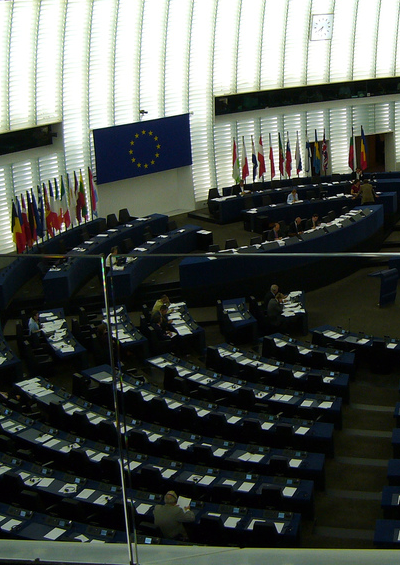With 15 EU “Spitzenkandidaten” — Whom to Choose?
The system to select the new Commission President may have been well-intentioned, but it remains the private plaything of Brussels insiders with little contact to European citizens.
May 17, 2019

My ballot paper for the European Parliament has arrived. But I am confused. According to the press reports, this election will help chose the next President of the European Commission – an important post no matter what corner of Europe one lives in.
But my ballot paper gives no idea of who those candidates to run Europe are — or how the way in which I cast a vote might achieve a desired result.
My own party, the Labour Party, uses the word “Europe” just once in the four-page manifesto leaflet that has come through my front door. It features a very large picture of Jeremy Corbyn. As far as I know, he is not running to run the EU.
The “Spitzenkandidat” system
The so-called Spitzenkandidat system came about a decade ago. The idea was cooked up in the closed rooms of Brussels to fill in the EU’s legendary “democratic deficit.” The basic idea was to make the Commission president someone who had been elected at least in some form by the people of Europe — via their choice of MEPs.
It mattered little that participation in European Parliament elections had fallen from 62% in 1979 to 43% in 2014, and that maybe one voter in half a million could name an MEP.
The first Spitzenkandidat election took place in 2014. It featured Jean Claude Juncker for the center-right European Peoples Party and Martin Schulz for the center-left Socialists and Democrats.
Because he is a German, five years ago the streets in Berlin were covered with posters showing Martin Schulz’s cheery face. The German CDU/CSU, the EPP’s biggest member party, were backing Jean-Claude Juncker.
However, every EPP poster in Germany showed a smiling Angela Merkel. She wasn’t running to lead Europe — but German voters were invited to vote for her reassuring features.
The EPP got more votes than any other party, but nowhere near a majority. Juncker was an experienced former prime minister and President of the Eurogroup. He was eminently qualified to be President of the European Commission, with or without the blessing of being a Spitzenkandidat.
The veto game
Certainly, the previous system of choosing Commission presidents had big flaws. In 1994, for example, John Major, the British Prime Minister, vetoed a Belgian (Jean Luc Dehaene) because the latter didn’t oppose Social Europe – the bête noire of Thatcher-era British Tory politicians.
The Commission President chosen instead was Jacques Santer, whose Commission collapsed in disgrace before its term ended.
In 2004, Tony Blair vetoed the candidacy of Guy Verhofstadt, mainly because he had been too loud-mouthed in his denunciations of George W. Bush and the war in Iraq.
The Barroso Commission
Instead, the Commission president was José Manual Barroso, who had dutifully supported the Iraq invasion. As a Portuguese student, Barroso was a Maoist but later turned conservative. His two terms in office were not happy ones for the EU.
Barroso and his colleagues in the Commission failed to spot and deal with key problems like mass immigration and the over-speedy enlargement to let in corrupt nations that were often run on the basis of a kleptocratic group, if not one-man rule.
It also found no answer to the destroyed hopes of young people in Greece, Spain, Italy and Portugal.
David Cameron in 2014 thought he could copy John Major as well as Tony Blair. He thus planned to veto Jean-Claude Juncker in order to appease the anti-Europeans rising in Britain’s Tory Party.
No one had bothered to tell Cameron that the Commission president was now chosen on the basis of a weighted or qualified majority, so that individual heads of government no longer wielded vetoes.
Spoiled for choice
Today, voters have got a long list of possible European Commission presidents to choose from. There is one center-right candidate, one center-left candidate, six liberal candidates, two hard-left candidates and none from the hard-right, populist party groupings (though Nigel Farage would surely make himself available).
The ruling party in France doesn’t have a candidate, while there are two wannabe Commission presidents from the ranks of European Green parties. Alas, none of these possible Commission presidents appear on ballot papers.
Under those circumstances, voters will do as they have done in all European Parliament elections. They will register a protest vote against the government of their nation and a populist vote on whatever they don’t like – mainly today any foreigners arriving in their country.
No party grouping is likely to win more than a quarter of seats. Thus, any claims to have the right to run Europe on that basis ring hollow.
The Spitzenkandidat system may have been well-intentioned, but it has not delivered. It remains the private plaything of Brussels insiders with little contact with European citizens.
New thinking is needed on how to connect the governance of the EU with its 450 million citizens.
Takeaways
The system to select the new Commission President may have been well-intentioned, but it remains the private plaything of Brussels insiders with little contact to European citizens.
The so-called Spitzenkandidat system came about a decade ago. It was cooked up in the closed rooms of Brussels to fill in the EU’s legendary “democratic deficit.”
Voters will do as they have done in all European Parliament elections -- register a protest vote against the government of their nation.
No party grouping is likely to win more than a quarter of seats. Thus, any claims to have the right to run Europe on that basis ring hollow.
New thinking is needed on how to connect the governance of the EU with its 450 million citizens.
Read previous
Global Governance
The Big Brexit Mess
May 16, 2019
